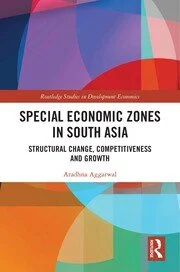INDIA’S EXIT FROM THE RCEP: DOES IT MAKE ECONOMIC CASE
On November 4, 2019, India opted out of the ongoing negotiations on the Regional Comprehensive Economic Partnership (RCEP) deal between sixteen economies from Asia and the Pacific, citing difficulties in negotiating mutually acceptable commitments in priority areas as the main reason. India’s decision to opt out of the deal has triggered a sharp criticism from the proponents of free trade who believe that regional integration can bring substantial gains to member countries by lowering trade and investment barriers. They view India’s decision as ‘retreat to protectionism’ which may cost her an opportunity to become a leading economic force in the region.
Why did India withdraw?
India had a multitude of pending issues to be resolved. In the goods sector, for instance India found the negotiations disappointing in ensuring adequate safeguards for its industry ( including the rules of origin) and farmers from import surge particularly from China, and greater market access for its selected products. At stake were also the diary and farm sectors due to stiff competition from Australia and New Zealand. The opening up of the dairy sector which is already being flooded by foreign players behind high tariff walls is feared to wipe out the small players. In services, which are of interest to India, the areas of easing of movement of workers (mode 4) and cross border trade in services (mode 1)were stated to be inadequately addressed. Further, the IPR provisions such as patent term extension and data exclusivity were seen detrimental for the supply of cheap generics in the country. India had concerns over the proposed e-commerce regime under which a government cannot stop a transnational service supplier operating in its country from transferring or processing data offshore, including personal or commercial information. There were apprehensions that these provisions would consolidate the dominance of the technology giants over digital technologies, services, and data.
Is there an economic case for India’s withdrawal?
The economic gains associated with RTAs are not unambiguous for the member countries. While focusing on trade gains, J. Venable in his article ‘Winners and Losers in a Regional Integration Agreement’ published in Economic Journal in 2003 has shown that in a regional group, those who have comparative advantages over a highly skewed range of goods relative to other partner countries are likely to lose from regional integration. He draws on the experience of a few existing trade blocs to underline how trade and manufacturing get concentrated in a few partner countries creating tensions within the trade blocs. From this perspective, India’s narrow revealed comparative and competitive advantages in the goods’ sector as reflected in her growing trade deficit with nearly all RCEP countries, can be a major hindrance in its ability to leverage the greater market access offered by the RCEP.
While analysing the impact of RTAs that India has already achieved, NITI Aayog the topmost government funded think tank in India in a recently conducted study “A note on free trade agreements and their costs” confirms that the RTAs signed by India have adversely affected its export performance with partner countries. It is also shown that the export growth with RTA partners has not been superior to the average export growth. A sector level analysis reveals that the trade balance with ASEAN has worsened for 13 out of 21 sectors which account for 75% of India’s exports to ASEAN. India’s exports are found to have rather low price sensitivity which is not surprising considering numerous production and market failures that hamper India’s competitiveness in international markets. Clearly, market access through RTAs while necessary, may not be sufficient to promote exports. Indeed, India has comparative advantage in the service sector which could compensate for the deficit in merchandise trade, but apparently India’s concerns were not adequately addressed.
One of the advantages of deeper regional integration is that it can be instrumental in promoting regional value chains and hence export-oriented FDI. From this perspective, RCEP could have given a major push to India’s ‘Make in India’ initiative. However, India might not be able to leverage this opportunity because it could not position itself as an export hub of manufacturing products. On the contrary, East and Southeast Asian countries who have been pursuing export led development strategies since the early stages of their growth process with special economic zones being at the center of this strategy, are likely to benefit enormously from this deal. There has been explosion of various types of economic zones in this region which are fiercely competing to attract FDI locked in global value chains by offering attractive incentives and business environment. Since 1991, the government of India has also been making attempts to promote export-led industrialization but with little success owing to a lack of strategic focus, poorly designed policies, weak implementation, corruption and poor governance. The share of exports in world exports has grown from 0.5% in 1991 to a mere 1.5% in 2018. However, the share of manufactured exports in merchandise exports fell sharply from 76.4% in 2000-01 to 61.3 percent in 2013. It did rise to around 70% by 2018 but with the export growth rate decelerating alongside.
All countries enter RTA negotiations to enhance their national interests. Considering that the RTAs can only build on the comparative/competitive advantages and not create them afresh, they negotiate hard to gain heavily in sectors where they enjoy such advantages while conceding a little in others. Apparently, India who tried to clinch the deal in services did not find much support in a group of countries with strong manufacturing capabilities and decided to back out.
What next?
It is high time India should do introspection and fix its structural constraints to strengthen static and dynamic advantages with a mindset to join the RCEP in the near future. The member countries have kept the doors open for India who has no choice but to integrate within the international economy and play a proactive role in promoting free and open regime in the region.
Author is Professor at Copenhagen Business School, Denmark. Aradhna.aggarwal@gmail.com




Awesome! Its actually amazing paragraph, I have got much clear idea about from this paragraph. Klarrisa Farr Landel